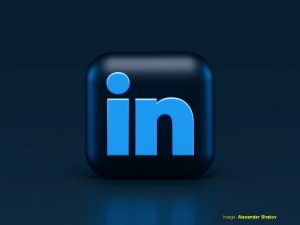While business professionals consider LinkedIn an essential platform for networking and the discovery of new learnings, there are some reasonable doubts about how well LinkedIn “Groups” are serving the online community. Evidence of this concern can be found in numerous articles with headlines like, “3 things we hate about LinkedIn Groups” or “Are LinkedIn Groups now dead?“, or that describe the typical LinkedIn Group as “a hellish wasteland of linkspam“.
Note: a shorter version of this content appears on LinkedIn.
Several million LinkedIn Groups have spawned, and it’s estimated that about half of all LinkedIn users have joined at least one Group. LinkedIn’s corporate owner Microsoft is eagerly looking for ways to reverse a “ghost town” image that besets the site, so there’s clearly a need here for concrete action to rescue LinkedIn Groups, if they can be healed. As with any sick patient, one of the first steps toward a healthier trajectory is an exam and diagnosis. One company has developed a mechanism to quickly ascertain how healthy any LinkedIn Group actually is, compared to a field of cohort Groups. Research Biz, located in Jensen Beach, Florida, utilizes a proprietary algorithm that accounts for the following attributes of any LinkedIn Group:
- How quickly requests from prospective new members are accepted
- Frequency of posts (measured with two indicators)
- Number of posts per capita
- Volume of comments on posts
- Percentage of posts that are spam/selling services
The assessment results in a clear-cut Community Health Score, with a lowest-possible value of negative four (-4) and a highest-possible rating of twenty (20). This enables us to understand whether a particular LinkedIn Group is far above average, above average, average, below average, or far below average in relative terms. We judge that average or better Groups can be improved with some considerable effort, but groups with a below-average Community Health Score are unlikely to ever scratch and claw their way up from the garbage heap without a monumental overhaul by the Group’s Admin(s).
We also conducted a short, informal survey of LinkedIn users. We asked which of four different characteristics is most important to them when judging the quality of a LinkedIn Group. They responded:

What makes content count as a “quality post”? Well, to give one example, a low-quality post (actually seen on LinkedIn) might read, “Contact Us for your field research needs in Tanzania”, with a link to the company’s website. An example of a high-quality post (also paraphrased from an actual one) would say, “An authentic Crocodile Hermès Kelly handbag costs 30,000€, but you could buy 300 similar faux bags for the same amount of money. So what persuades people to spend 300 times more on an item with the same functionality? What are the implicit motives that trigger these purchase decisions? If you want to learn all about it, join us on November 10th for our free lunch & learn session. Reserve your seat here…”
We tend to have an intuitive idea of what makes one LinkedIn Group “better” than another one. But we’ve finally cracked the code on knowing exactly how much better certain differences can be. Let’s take a look at an example of a batch of evaluated Groups in a specific industry vertical — the field of Market Research.
Community Health Scores for Groups dedicated to Market Research
Research Biz assembled a list of 18 different LinkedIn Groups that are dedicated to topics in the practice of Market Research. (You may ask, “Are eighteen Groups really necessary to manage different interests in such a specific field?” That may be a topic of discussion for another day!) Our first step here was to obtain membership in each of the Groups. Fortunately, that was easy for 11 out of the 18 in the sample — we were granted entry into these Groups within a few days, which should be the goal of any Group Admin(s); welcome your prospective new members quickly. However, to assess the seven Groups that did not let us in, we tried reaching out individually to the Admin(s) of each of the closed-off Groups. That prompted a positive response from two out of the seven, which left five out of the original 18 that we still couldn’t see. Fortunately, by networking with LinkedIn users who we knew to be members of these five non-responsive Groups, we got a chance to see through their eyes the contents of these Groups’ otherwise invisible content. (Here, a special thanks is appropriate for the research pros who very kindly helped us with this task: Kathy Alexander, Trudy Fula, Libby Mapes, Laraine Tumblin, and Adriana Waterston.)
First, the bad news. Within these Groups about market research, we found that spam and low-quality marketing content comprised 46% of all their posts. More bad news was that a typical post in one of these LinkedIn Groups had only a 4% chance of receiving a comment from someone else in the community. The old “spray and pray” marketing technique is clearly in force in many LinkedIn Groups.
The good news? Out of the 18 Groups that we assessed in the field of market research, four of them scored in what we call the “above average” category, and one achieved a “well above average” score of 17, just shy of the maximum 20.
|
GROUP NAME
|
COMMUNITY HEALTH SCORE
|
LINK URL
|
| Market Research Marketing Professionals Group | 17 | https://www.linkedin.com/groups/129806/ |
| The Marketing Research & Insights Group | Powered by Quirk’s | 15 | https://www.linkedin.com/groups/1772348/ |
| Innovation and New Tools in Marketing Research | 15 | https://www.linkedin.com/groups/3791445/ |
| Next Gen Market Research (NGMR) | 14 | https://www.linkedin.com/groups/31804/ |
| Consumer Insights & Market Research – Worldwide Alumni Network | 13 | https://www.linkedin.com/groups/1131687/ |
| NewMR – Co-creating the future of Market Research | 10 | https://www.linkedin.com/groups/2446402/ |
| Market Research Professionals | 10 | https://www.linkedin.com/groups/82105/ |
| Market Research Jokes and funny stories | 9 | https://www.linkedin.com/groups/3274744/ |
| Market research knowledge forum | 8 | https://www.linkedin.com/groups/3317/ |
| Linked Marketing Research | 6 | https://www.linkedin.com/groups/2249879/ |
| Market Research Freelancers | 5 | https://www.linkedin.com/groups/2202074/ |
| The Market Research Event | 5 | https://www.linkedin.com/groups/68640/ |
| Online/Mobile Market Research & Surveys | 4 | https://www.linkedin.com/groups/3316876/ |
| Market Research Freelancers forum | 1 | https://www.linkedin.com/groups/4428055/ |
| International Market Research Society | -1 | https://www.linkedin.com/groups/3095124/ |
| Marketing Research (CETRA) | -1 | https://www.linkedin.com/groups/4120845/ |
| The Qualitative Market Research Forum | -2 | https://www.linkedin.com/groups/148266/ |
| The Quantitative Market Research Forum | -2 | https://www.linkedin.com/groups/148265/ |
We also reached out to three different employees of LinkedIn who are “Connections”, as well as the LinkedIn press team, to get their feedback and to perhaps provide a few examples of the best Groups that are a couple of standard deviations above the norm with member participation in high-quality posts and engaging comments. Our Connections were unable to personally assist, and the press response from Amanda Purvis at LinkedIn merely pointed us to a Help page.
A call to action
So, it appears that if we want to experience LinkedIn Groups that provide us better value, the work is literally on us. If you are a member of a low-value Group on LinkedIn, you owe it to yourself and the community to notify the Admin(s) that the Group isn’t serving your needs (explain why in specific detail) and remove yourself from that Group if the Admin is non-responsive or indifferent. After all, LinkedIn puts a limit on how many Groups you may join, so spend your time more wisely with fewer but higher-quality Groups.
If you are an Admin or creator of any Group on LinkedIn, you owe it to yourself and to your community of joined members to reflect on whether you’re sufficiently taking care of your Group. If you’re not responding to new member requests, or you’re not deleting the most egregious examples of spam from the Group’s postings (and potentially showing those unrepentant self-promoters the door), why are you even taking ownership of the Group? You’d be better to shut it down or divest your Admin status to someone more eager to serve, so that members can focus their time and energy on a better-managed Group.
If you are truly dedicated to operating a useful and valuable Group on LinkedIn, and you’re eager to improve the dynamics of participation in your LinkedIn Group community, Research Biz is happy to assist you with obtaining a benchmark assessment of your Group’s own Community Health Score.
In other news
Research Biz has been recognized as one of the Top Florida Market Research Companies by DesignRush.


